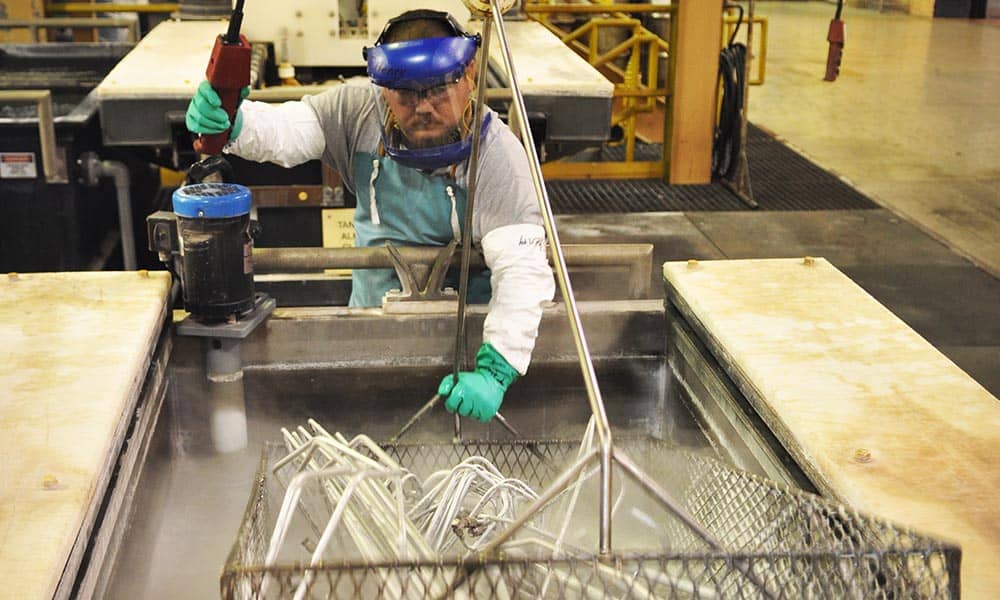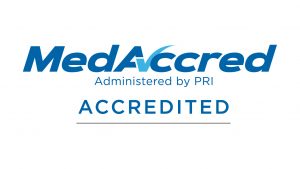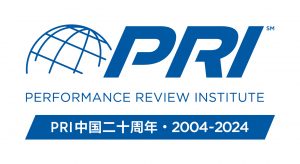Metals such as copper, lead, tin, gold, and silver have been mined, smelted, and used since ancient times. The importance of metals and metal alloy in human history has been solidified by using metals names to classify time periods in history, such as the Bronze and Iron Ages. By 1750, only a mere 11 metals had been discovered. Currently, there are more than 75 different metals or metallic substances in the periodic table of the elements. Each metal has its own unique chemical and physical properties. In an ideal world, we would use the metal that is best suited to the job in hand. However, this could be very expensive, especially when using precious metals like silver, gold or platinum. Even metals such as nickel and copper are relatively expensive.
What if we could turn one metal into another by coating it with a different metal, allowing it to appear and exhibit all the properties of the coating metal? The part could be made from a cheaper material and covered with a metal that meets all the physical and chemical requirements. As discussed in the new eQuaLearn Chemical Processing: The Science and Application of Plating course, electroplating is a perfect method for performing this process and it is widely used in various industries for coating metal parts with a thin layer of a different metal. The layer of metal deposited has some desired property, which the base metal of the part lacks. For example, Chromium plating is carried out on many objects such as car parts, bath taps, and wheel rims because Chromium is a highly corrosion-resistant, thus it prolongs the life of the parts. Whereas gold and silver plating are used to make inexpensive jewelry and electronics. One of the most common forms of electroplating is used in the creation of coins. The United States penny, for example is made of zinc covered in a layer of electroplated copper. Electroplating can change the chemical, physical, and mechanical properties of a part:
- Chemical change – Zinc plate improves corrosion resistance of steel screws
- Physical change – Bright Chromium and nickel plate are used to change the appearance of bathroom and kitchen fixtures to a bright mirror like finish
- Mechanical change – Hard Chromium to increase surface hardness on hydraulic rams. Surface hardness which is a required attribute in tooling industry
For electroplating to be successful, it is vital to clean the actual hardware before plating. Molecular layers of dirt and oil can prevent adhesion of the coating, therefore, it is critical that the hardware is clean. Cleaning processes include solvent cleaning, hot alkaline detergent cleaning, electrocleaning, and acid treatment. The most common industrial test for cleanliness is the waterbreak free test. This test is performed by cleaning the surface, thoroughly rinsing, and holding the hardware vertically. Hydrophobic contaminants, such as oils cause the water to bead and break up, allowing the water to drain rapidly. Perfectly clean metal surfaces are hydrophilic and will retain an unbroken sheet of water that does not bead up or drain off. This test does not detect hydrophilic contaminants; however, the electroplating process can displace these easily since most solutions are water-based. Surfactants, such as soap reduce the sensitivity of this test and must be thoroughly rinsed off. As the saying goes in the plating industry, “cleanliness is more than godliness.”
Once the hardware is properly cleaned, it is ready for electroplating. Electrodeposition is the process used in electroplating. The part to be plated is composed of the cathode (negative electrode) of the circuit and the anode (positive electrode), which can be made of the metal to be plated or an insoluble material, like lead or carbon. Both components are immersed in a solution called an electrolyte. It contains one or more dissolved metal salts and other ions that permit the flow of electricity. A power supply sends a direct current to the anode, oxidizing the metal atoms, and allowing them to dissolve in the solution. The dissolved metal ions in the electrolyte solution are then reduced at the cathode surface, which deposits them onto the cathode. The rate at which the anode is dissolved is equal to the rate at which the cathode is plated. In this manner, the ions in the electrolyte bath are continuously replenished by the anode.
Many plating baths include cyanides of other metals, like potassium cyanide, in addition to cyanides of the metal to be deposited. These free cyanides facilitate anode corrosions which help to maintain a constant metal ion level and contribute to the conductivity of the solution. Additionally, non-metal chemicals like carbonates and phosphates may be added to increase conductivity. When plating is not desired on certain areas of the part, maskants are applied to prevent the bath from encountering these areas. Typical maskants include tape, foil, lacquer, and waxes. The ability of the plating process to cover uniformly is called throwing power; the better the throwing power, the more uniform the coating.
Solution analysis is key to control the process. Each solution bath used has a defined control range for optimal performance and need to be monitored. Basic control methods include, but are not limited to basic titrations, pH monitoring, metal analysis using spectroscopy, and use of a hull cell. A hull cell is a mini plating chamber used in the lab to emulate bath conditions across the range of operating conditions. As further discussed in the eQuaLearn training, this is a tool used to help trouble shoot and prevent potential plating issues.
The final step in the process is the final inspection of the hardware. Lot and periodic testing are what ensure the process has produced an acceptable product. Some common final inspections are visual, thickness, adhesion, porosity, hydrogen pickup, salt spray, and solvent resistance.
Electroplating has been around for over 200 years allowing it to become one of the more enduring processes turning the surface of one metal into another. It has been a common practice in many industries, however, it is starting to become rare due to the requirement to have both hands on and book training. The information covered in the eQuaLearn course is a good start towards learning the proper processing of electroplating.
eQuaLearn’s new Chemical Processing: The Science and Application of Plating course will be conducted in Torrance, CA; Dallas, TX; Pittsburgh, PA; and Manchester, UK in 2018. For additional information on this training or a complete list of upcoming eQuaLearn courses and locations, please visit www.equalearn.com or email eQuaLearn@p-r-i.org.





